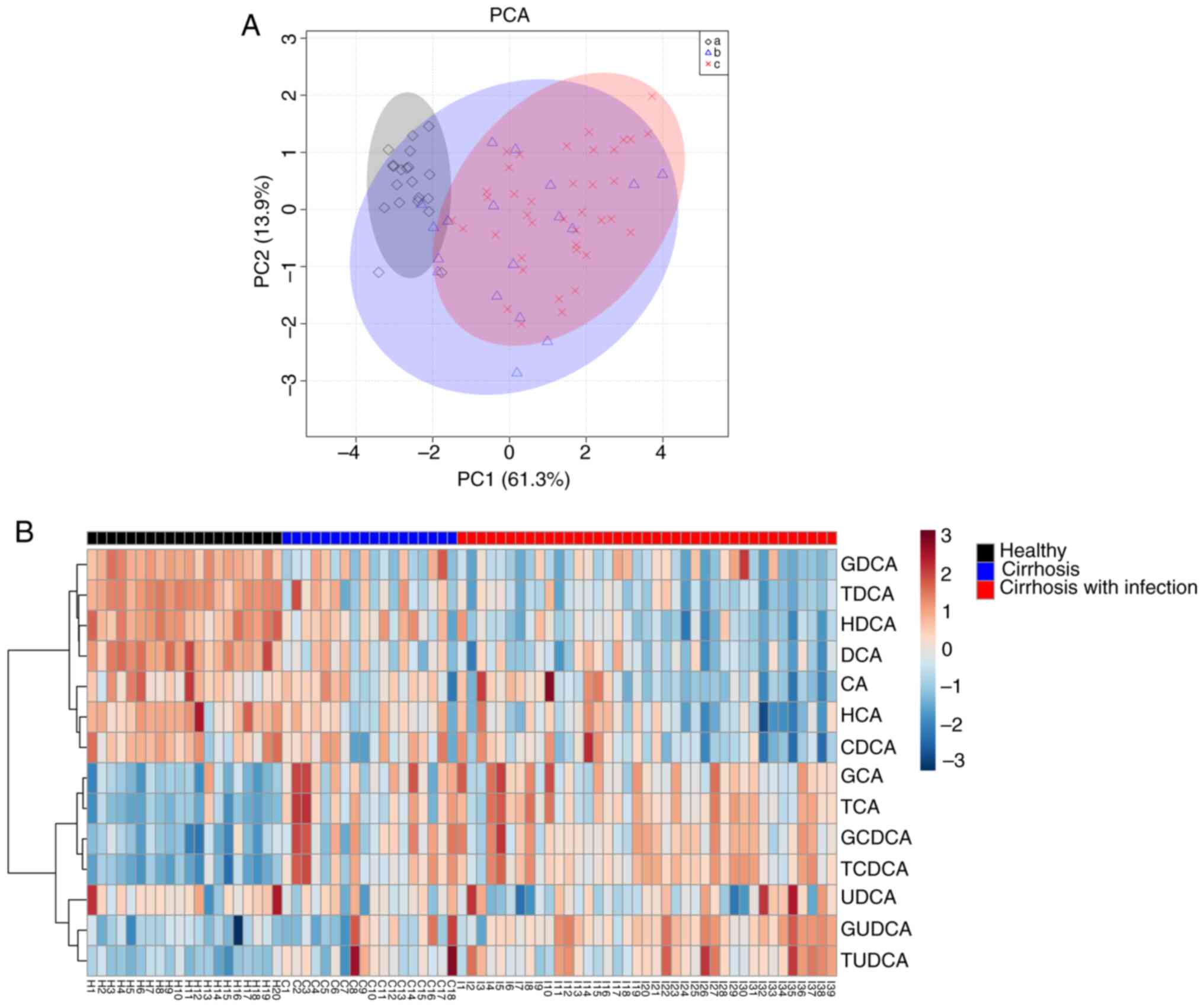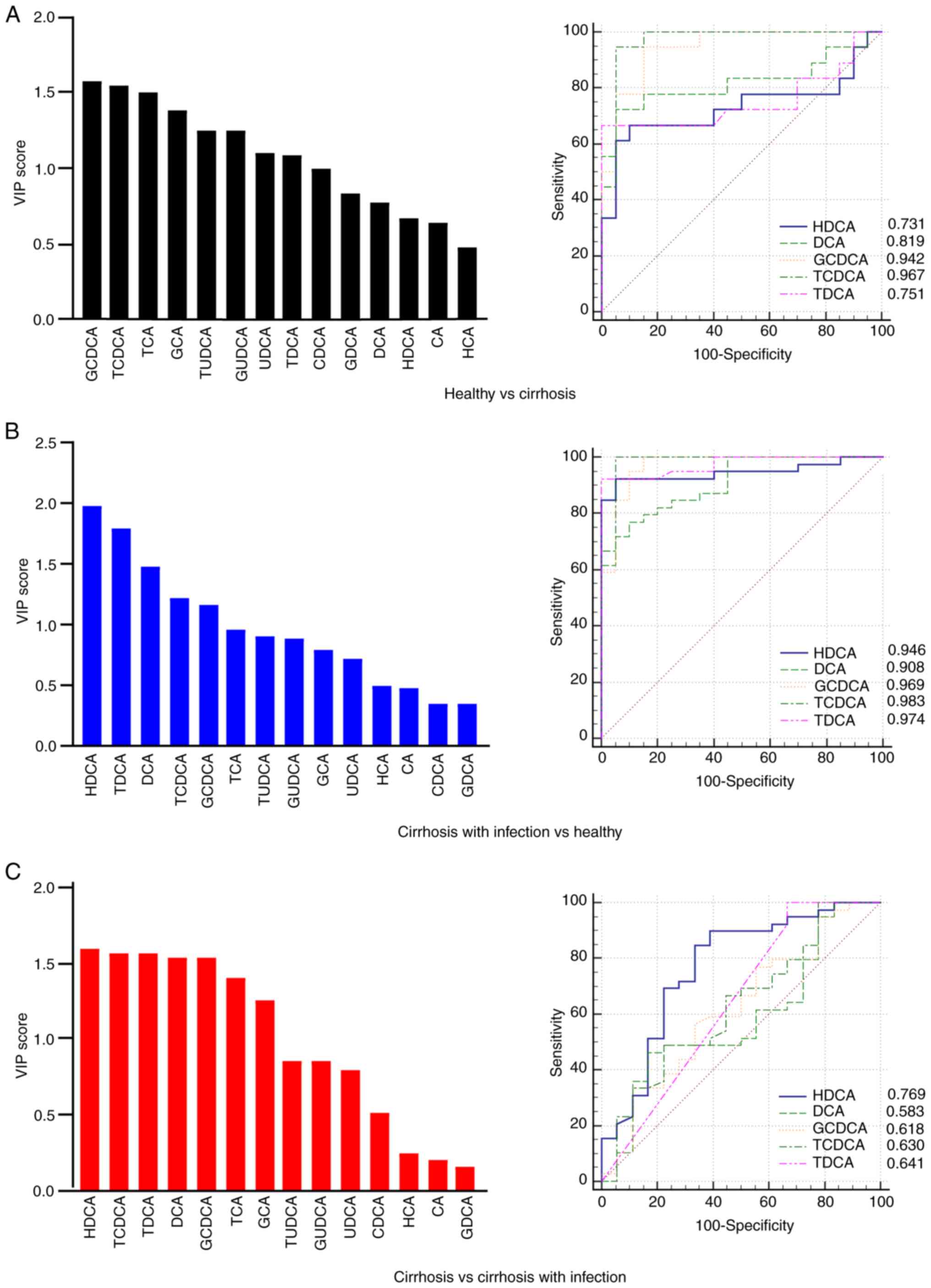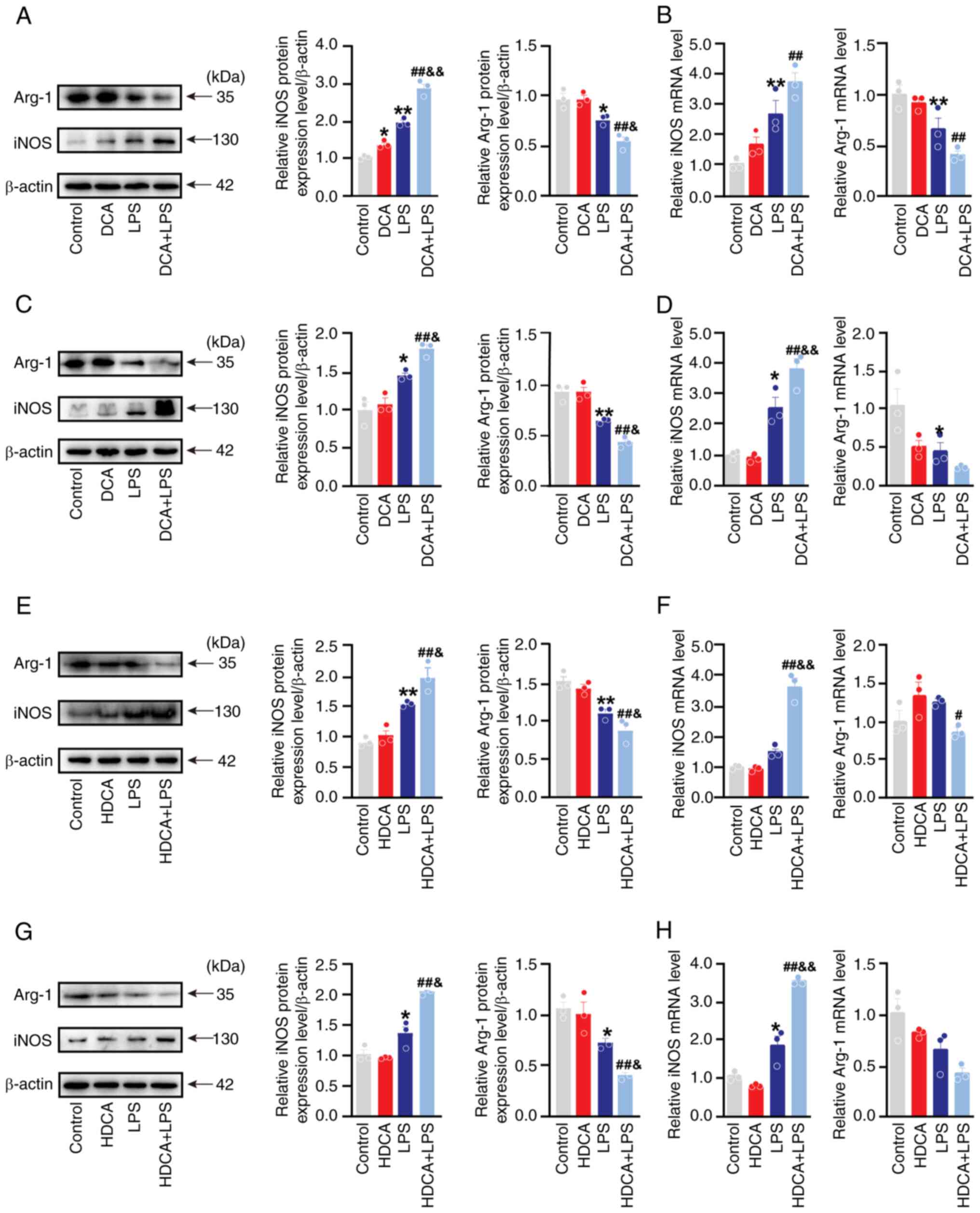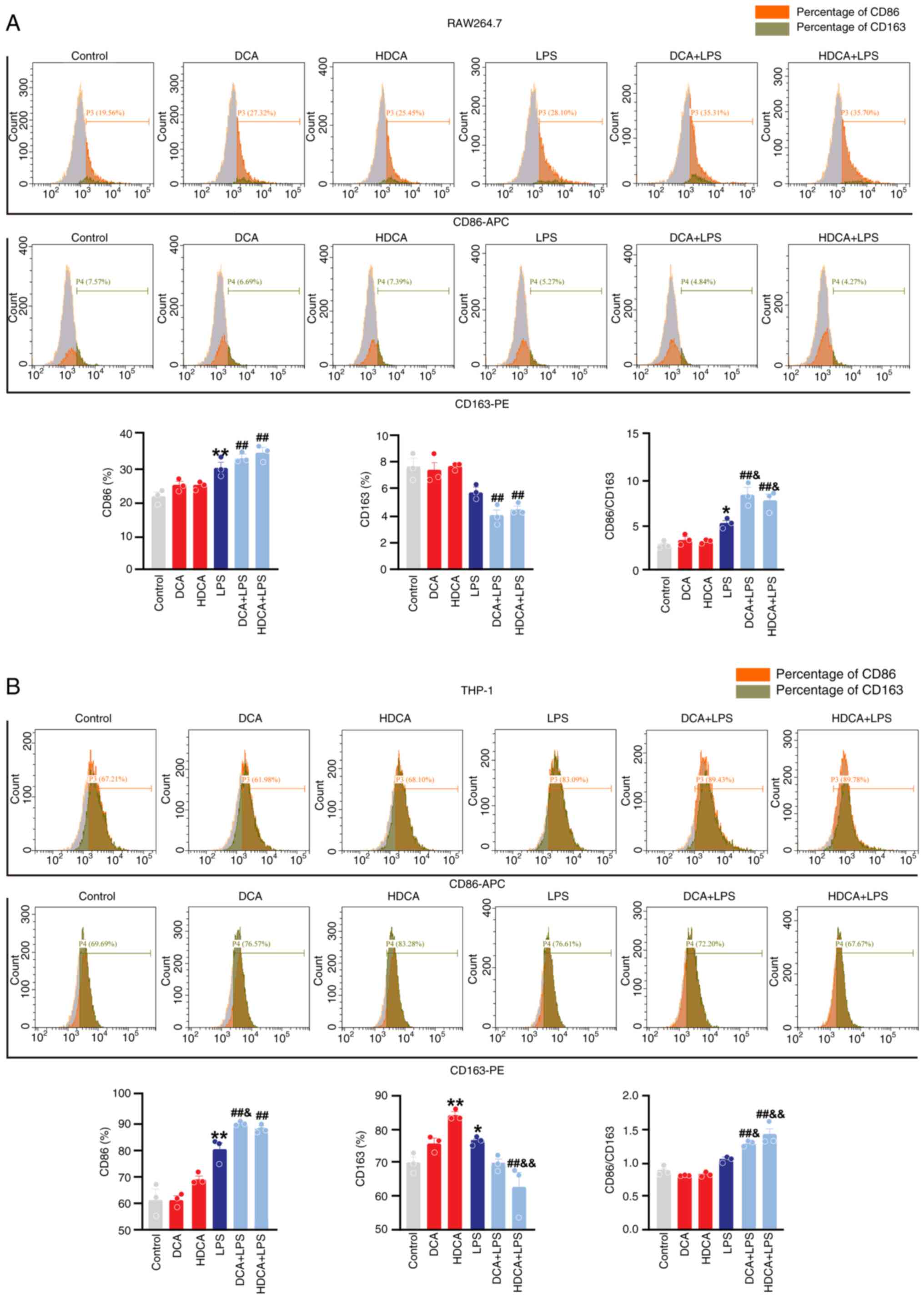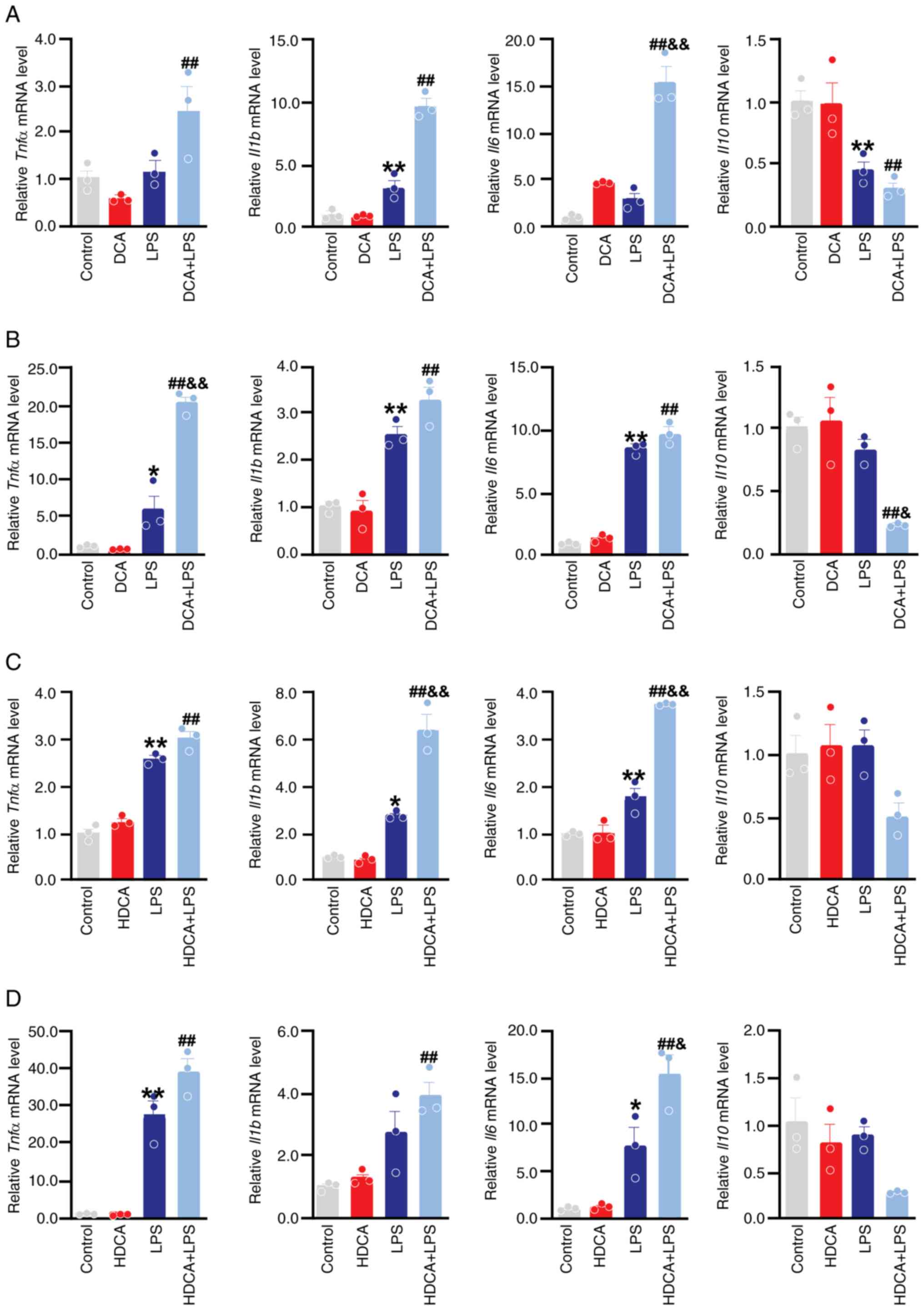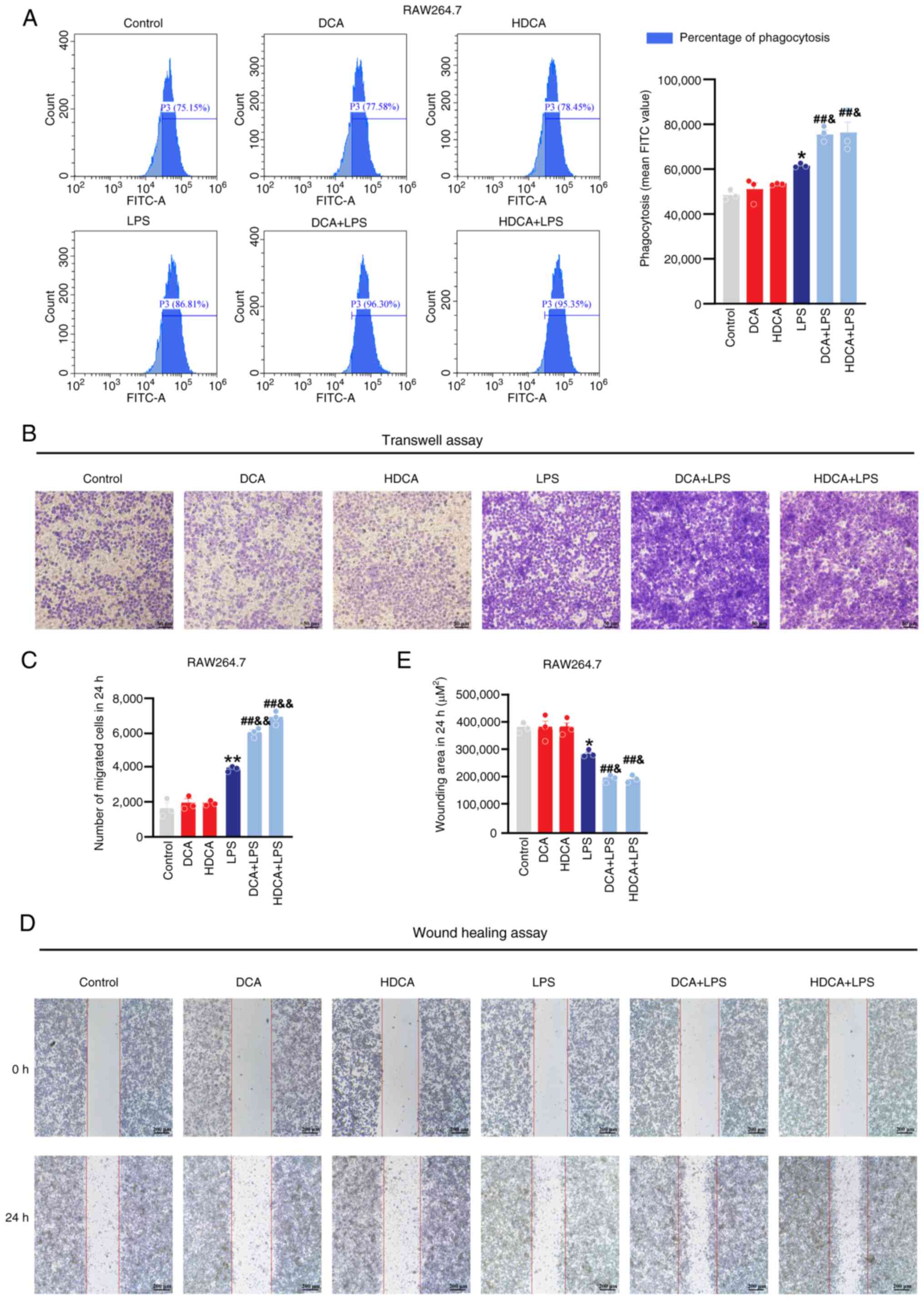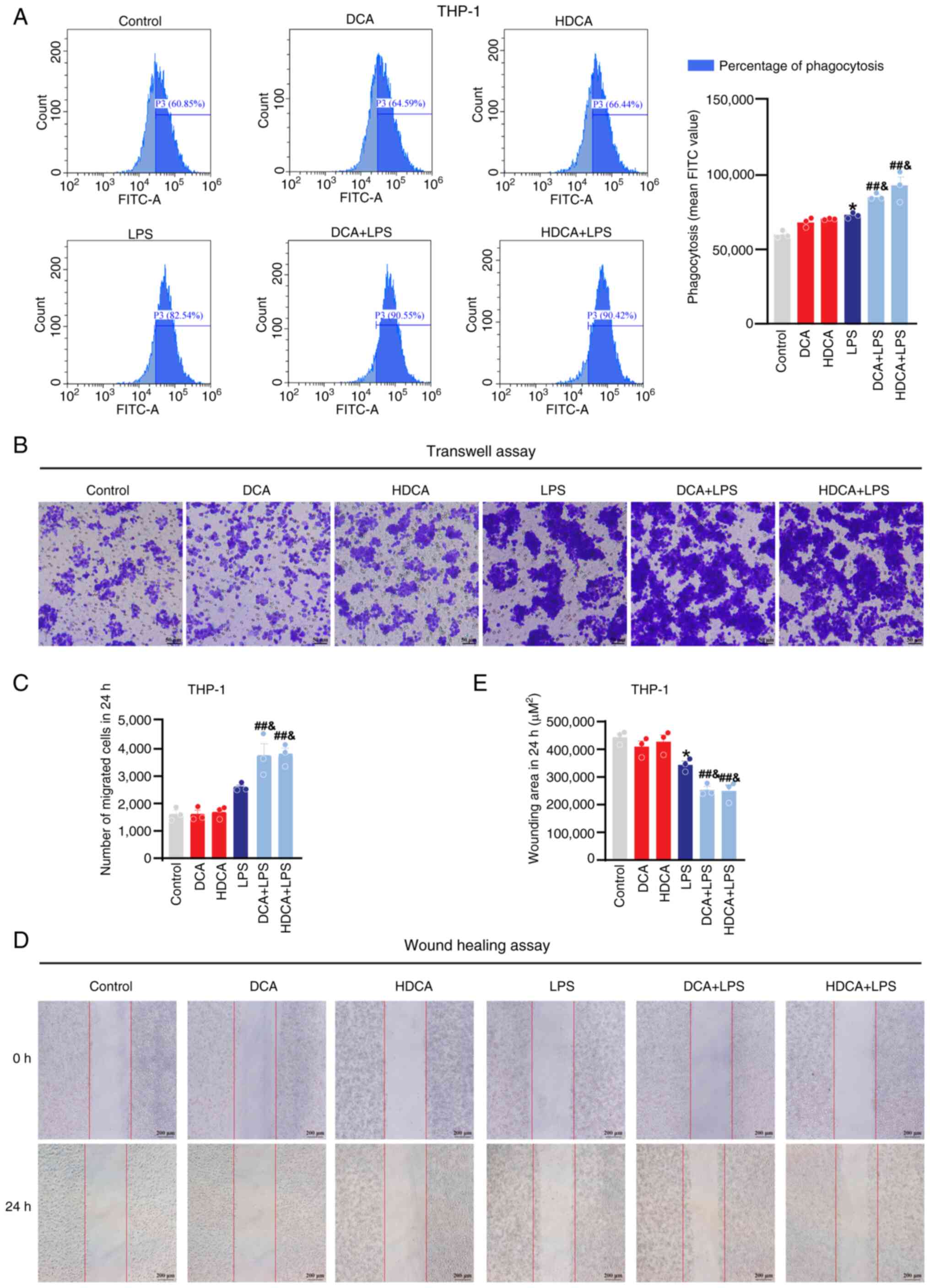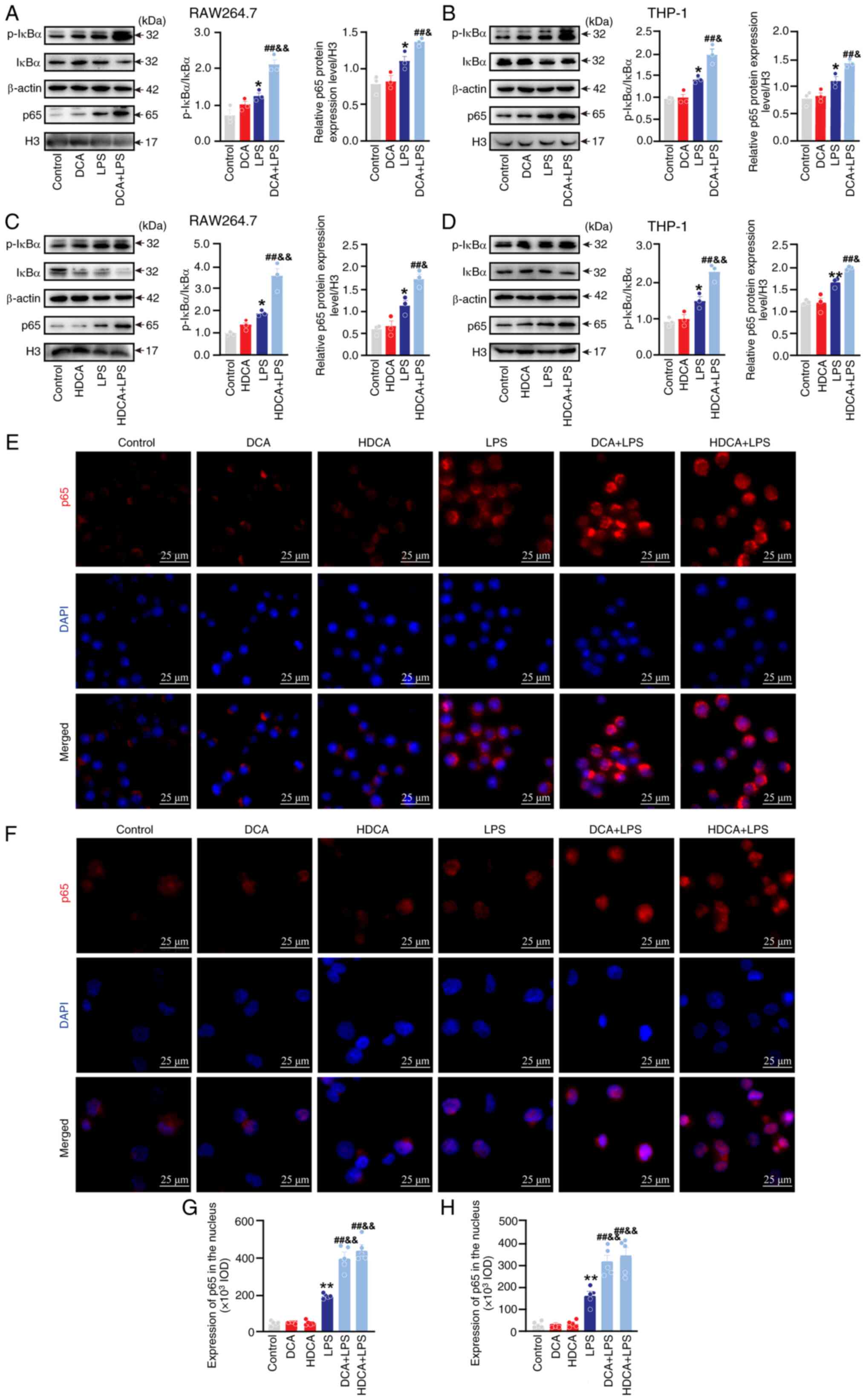|
1
|
Wilde B and Katsounas A: Immune
dysfunction and albumin-related immunity in liver cirrhosis.
Mediators Inflamm. 2019:75376492019. View Article : Google Scholar : PubMed/NCBI
|
|
2
|
Ginès P, Krag A, Abraldes JG, Solà E,
Fabrellas N and Kamath PS: Liver cirrhosis. Lancet. 398:1359–1376.
2021. View Article : Google Scholar : PubMed/NCBI
|
|
3
|
Irvine KM, Ratnasekera I, Powell EE and
Hume DA: Causes and consequences of innate immune dysfunction in
cirrhosis. Front Immunol. 10:2932019. View Article : Google Scholar : PubMed/NCBI
|
|
4
|
Haidar G and Singh N: The evolving
challenge of infections in cirrhosis. N Engl J Med. 385:1150–1151.
2021. View Article : Google Scholar : PubMed/NCBI
|
|
5
|
Fernández J, Piano S, Bartoletti M and Wey
EQ: Management of bacterial and fungal infections in cirrhosis: The
MDRO challenge. J Hepatol. 75 (Suppl 1):S101–S117. 2021. View Article : Google Scholar : PubMed/NCBI
|
|
6
|
Albillos A, Lario M and Álvarez-Mon M:
Cirrhosis-associated immune dysfunction: Distinctive features and
clinical relevance. J Hepatol. 61:1385–1396. 2014. View Article : Google Scholar : PubMed/NCBI
|
|
7
|
Noor MT and Manoria P: Immune dysfunction
in cirrhosis. J Clin Transl Hepatol. 5:50–58. 2017.PubMed/NCBI
|
|
8
|
Yunna C, Mengru H, Lei W and Weidong C:
Macrophage M1/M2 polarization. Eur J Pharmacol. 877:1730902020.
View Article : Google Scholar : PubMed/NCBI
|
|
9
|
Geiß C, Salas E, Guevara-Coto J,
Régnier-Vigouroux A and Mora-Rodriguez RA: Multistability in
macrophage activation pathways and metabolic implications. Cells.
11:4042022. View Article : Google Scholar
|
|
10
|
Van der Merwe S, Chokshi S, Bernsmeier C
and Albillos A: The multifactorial mechanisms of bacterial
infection in decompensated cirrhosis. J Hepatol. 75 (Suppl
1):S82–S100. 2021. View Article : Google Scholar : PubMed/NCBI
|
|
11
|
Jia W, Xie G and Jia W: Bile
acid-microbiota crosstalk in gastrointestinal inflammation and
carcinogenesis. Nat Rev Gastroenterol Hepatol. 15:111–128. 2018.
View Article : Google Scholar : PubMed/NCBI
|
|
12
|
Balazs I, Horvath A, Leber B, Feldbacher
N, Sattler W, Rainer F, Fauler G, Vermeren S and Stadlbauer V:
Serum bile acids in liver cirrhosis promote neutrophil dysfunction.
Clin Transl Med. 12:e7352022. View Article : Google Scholar : PubMed/NCBI
|
|
13
|
Zhou J, Huang N, Guo Y, Cui S, Ge C, He Q,
Pan X, Wang G, Wang H and Hao H: Combined obeticholic acid and
apoptosis inhibitor treatment alleviates liver fibrosis. Acta Pharm
Sin B. 9:526–536. 2019. View Article : Google Scholar : PubMed/NCBI
|
|
14
|
Cao S, Meng X, Li Y, Sun L, Jiang L, Xuan
H and Chen X: Bile acids elevated in chronic periaortitis could
activate farnesoid-X-receptor to suppress IL-6 production by
macrophages. Front Immunol. 12:6328642021. View Article : Google Scholar : PubMed/NCBI
|
|
15
|
Hao H, Cao L, Jiang C, Che Y, Zhang S,
Takahashi S, Wang G and Gonzalez FJ: Farnesoid X receptor
regulation of the NLRP3 inflammasome underlies
cholestasis-associated sepsis. Cell Metab. 25:856–867.e5. 2017.
View Article : Google Scholar : PubMed/NCBI
|
|
16
|
Yoshiji H, Nagoshi S, Akahane T, Asaoka Y,
Ueno Y, Ogawa K, Kawaguchi T, Kurosaki M, Sakaida I, Shimizu M, et
al: Evidence-based clinical practice guidelines for liver cirrhosis
2020. J Gastroenterol. 56:593–619. 2021. View Article : Google Scholar : PubMed/NCBI
|
|
17
|
European Association for the Study of the
Liver, . EASL clinical practice guidelines on the management of
ascites, spontaneous bacterial peritonitis, and hepatorenal
syndrome in cirrhosis. J Hepatol. 53:397–417. 2010. View Article : Google Scholar : PubMed/NCBI
|
|
18
|
Aithal GP, Palaniyappan N, China L,
Härmälä S, Macken L, Ryan JM, Wilkes EA, Moore K, Leithead JA,
Hayes PC, et al: Guidelines on the management of ascites in
cirrhosis. Gut. 70:9–29. 2021. View Article : Google Scholar : PubMed/NCBI
|
|
19
|
Chinese Society of Hepatology Chinese
Medical Association, ; Xu X, Duan Z, Ding H, Li W, Jia J, Wei L,
Linghu E and Zhuang H: Chinese guidelines on the management of
ascites and its related complications in cirrhosis. Hepatol Int.
13:1–21. 2019. View Article : Google Scholar : PubMed/NCBI
|
|
20
|
Fuenzalida B, Yañez MJ, Mueller M, Mistry
HD, Leiva A and Albrecht C: Evidence for hypoxia-induced
dysregulated cholesterol homeostasis in preeclampsia: Insights into
the mechanisms from human placental cells and tissues. FASEB J.
38:e234312024. View Article : Google Scholar : PubMed/NCBI
|
|
21
|
Buzzetti E, Parikh PM, Gerussi A and
Tsochatzis E: Gender differences in liver disease and the drug-dose
gender gap. Pharmacol Res. 120:97–108. 2017. View Article : Google Scholar : PubMed/NCBI
|
|
22
|
Durand F and Valla D: Assessment of the
prognosis of cirrhosis: Child-Pugh versus MELD. J Hepatol. 42
(Suppl):S100–S107. 2005. View Article : Google Scholar : PubMed/NCBI
|
|
23
|
Qamar AA, Grace ND, Groszmann RJ,
Garcia-Tsao G, Bosch J, Burroughs AK, Ripoll C, Maurer R, Planas R,
Escorsell A, et al: Incidence, prevalence, and clinical
significance of abnormal hematologic indices in compensated
cirrhosis. Clin Gastroenterol Hepatol. 7:689–695. 2009. View Article : Google Scholar : PubMed/NCBI
|
|
24
|
Deng W, Rao J, Chen X, Li D, Zhang Z, Liu
D, Liu J, Wang Y and Huang O: Metabolomics study of serum and urine
samples reveals metabolic pathways and biomarkers associated with
pelvic organ prolapse. J Chromatogr B Analyt Technol Biomed Life
Sci. 1136:1218822020. View Article : Google Scholar : PubMed/NCBI
|
|
25
|
Xia L, Zhang C, Lv N, Liang Z, Ma T, Cheng
H, Xia Y and Shi L: AdMSC-derived exosomes alleviate acute lung
injury via transferring mitochondrial component to improve
homeostasis of alveolar macrophages. Theranostics. 12:2928–2947.
2022. View Article : Google Scholar : PubMed/NCBI
|
|
26
|
Weber M, Lutz R, Olmos M, Glajzer J, Baran
C, Nobis CP, Möst T, Eckstein M, Kesting M and Ries J: Beyond
PD-L1-identification of further potential therapeutic targets in
oral cancer. Cancers (Basel). 14:18122022. View Article : Google Scholar : PubMed/NCBI
|
|
27
|
Bonnel AR, Bunchorntavakul C and Reddy KR:
Immune dysfunction and infections in patients with cirrhosis. Clin
Gastroenterol Hepatol. 9:727–738. 2011. View Article : Google Scholar : PubMed/NCBI
|
|
28
|
Garrido A, Kim E, Teijeiro A, Sánchez
Sánchez P, Gallo R, Nair A, Matamala Montoya M, Perna C, Vicent GP,
Muñoz J, et al: Histone acetylation of bile acid transporter genes
plays a critical role in cirrhosis. J Hepatol. 76:850–861. 2022.
View Article : Google Scholar : PubMed/NCBI
|
|
29
|
Rauchbach E, Zeigerman H, Abu-Halaka D and
Tirosh O: Cholesterol induces oxidative stress, mitochondrial
damage and death in hepatic stellate cells to mitigate liver
fibrosis in mice model of NASH. Antioxidants (Basel). 11:5362022.
View Article : Google Scholar : PubMed/NCBI
|
|
30
|
Aliwa B, Horvath A, Traub J, Feldbacher N,
Habisch H, Fauler G, Madl T and Stadlbauer V: Altered gut
microbiome, bile acid composition and metabolome in sarcopenia in
liver cirrhosis. J Cachexia Sarcopenia Muscle. 14:2676–2691. 2023.
View Article : Google Scholar : PubMed/NCBI
|
|
31
|
Bertolini A, Fiorotto R and Strazzabosco
M: Bile acids and their receptors: Modulators and therapeutic
targets in liver inflammation. Semin Immunopathol. 44:547–564.
2022. View Article : Google Scholar : PubMed/NCBI
|
|
32
|
Režen T, Rozman D, Kovács T, Kovács P,
Sipos A, Bai P and Mikó E: The role of bile acids in
carcinogenesis. Cell Mol Life Sci. 79:2432022. View Article : Google Scholar : PubMed/NCBI
|
|
33
|
Wang H, Ge C, Zhou J, Guo Y, Cui S, Huang
N, Yan T, Cao L, Che Y, Zheng Q, et al: Noncanonical farnesoid X
receptor signaling inhibits apoptosis and impedes liver fibrosis.
EBioMedicine. 37:322–333. 2018. View Article : Google Scholar : PubMed/NCBI
|
|
34
|
Thomas JP, Modos D, Rushbrook SM, Powell N
and Korcsmaros T: The emerging role of bile acids in the
pathogenesis of inflammatory bowel disease. Front Immunol.
13:8295252022. View Article : Google Scholar : PubMed/NCBI
|
|
35
|
Thibaut MM and Bindels LB: Crosstalk
between bile acid-activated receptors and microbiome in
entero-hepatic inflammation. Trends Mol Med. 28:223–236. 2022.
View Article : Google Scholar : PubMed/NCBI
|
|
36
|
Yan T, Yan N, Wang H, Yagai T, Luo Y,
Takahashi S, Zhao M, Krausz KW, Wang G, Hao H and Gonzalez FJ:
FXR-deoxycholic Acid-TNF-α axis modulates acetaminophen-induced
hepatotoxicity. Toxicol Sci. 181:273–284. 2021. View Article : Google Scholar : PubMed/NCBI
|
|
37
|
Sun R, Zhang Z, Bao R, Guo X, Gu Y, Yang
W, Wei J, Chen X, Tong L, Meng J, et al: Loss of SIRT5 promotes
bile acid-induced immunosuppressive microenvironment and
hepatocarcinogenesis. J Hepatol. 77:453–466. 2022. View Article : Google Scholar : PubMed/NCBI
|
|
38
|
Romero-Ramirez L, Garcia-Rama C, Wu S and
Mey J: Bile acids attenuate PKM2 pathway activation in
proinflammatory microglia. Sci Rep. 12:14592022. View Article : Google Scholar : PubMed/NCBI
|
|
39
|
Wang L, Gong Z, Zhang X, Zhu F, Liu Y, Jin
C, Du X, Xu C, Chen Y, Cai W, et al: Gut microbial bile acid
metabolite skews macrophage polarization and contributes to
high-fat diet-induced colonic inflammation. Gut Microbes. 12:1–20.
2020. View Article : Google Scholar
|
|
40
|
Pi Y, Wu Y, Zhang X, Lu D, Han D, Zhao J,
Zheng X, Zhang S, Ye H, Lian S, et al: Gut microbiota-derived
ursodeoxycholic acid alleviates low birth weight-induced colonic
inflammation by enhancing M2 macrophage polarization. Microbiome.
11:192023. View Article : Google Scholar : PubMed/NCBI
|
|
41
|
Mobraten K, Haugbro T, Karlstrom E,
Kleiveland CR and Lea T: Activation of the bile acid receptor TGR5
enhances LPS-induced inflammatory responses in a human monocytic
cell line. J Recept Signal Transduct Res. 35:402–409. 2015.
View Article : Google Scholar : PubMed/NCBI
|
|
42
|
Zhu H, Bai Y, Wang G, Su Y, Tao Y, Wang L,
Yang L, Wu H, Huang F, Shi H and Wu X: Hyodeoxycholic acid inhibits
lipopolysaccharide-induced microglia inflammatory responses through
regulating TGR5/AKT/NF-κB signaling pathway. J Psychopharmacol.
36:849–859. 2022. View Article : Google Scholar : PubMed/NCBI
|
|
43
|
Li J, Chen Y, Li R, Zhang X, Chen T, Mei
F, Liu R, Chen M, Ge Y, Hu H, et al: Gut microbial metabolite
hyodeoxycholic acid targets the TLR4/MD2 complex to attenuate
inflammation and protect against sepsis. Mol Ther. 31:1017–1032.
2023. View Article : Google Scholar : PubMed/NCBI
|
|
44
|
Fiorucci S, Biagioli M, Zampella A and
Distrutti E: Bile acids activated receptors regulate innate
immunity. Front Immunol. 9:18532018. View Article : Google Scholar : PubMed/NCBI
|
|
45
|
Cai J, Rimal B, Jiang C, Chiang JYL and
Patterson AD: Bile acid metabolism and signaling, the microbiota,
and metabolic disease. Pharmacol Ther. 237:1082382022. View Article : Google Scholar : PubMed/NCBI
|
|
46
|
Che Y, Xu W, Ding C, He T, Xu X, Shuai Y,
Huang H, Wu J, Wang Y, Wang C, et al: Bile acids target mitofusin 2
to differentially regulate innate immunity in physiological versus
cholestatic conditions. Cell Rep. 42:1120112023. View Article : Google Scholar : PubMed/NCBI
|
|
47
|
Liu J, Wei Y, Jia W, Can C, Wang R, Yang
X, Gu C, Liu F, Ji C and Ma D: Chenodeoxycholic acid suppresses AML
progression through promoting lipid peroxidation via ROS/p38
MAPK/DGAT1 pathway and inhibiting M2 macrophage polarization. Redox
Biol. 56:1024522022. View Article : Google Scholar : PubMed/NCBI
|
|
48
|
Vogel DY, Glim JE, Stavenuiter AW, Breur
M, Heijnen P, Amor S, Dijkstra CD and Beelen RH: Human macrophage
polarization in vitro: Maturation and activation methods compared.
Immunobiology. 219:695–703. 2014. View Article : Google Scholar : PubMed/NCBI
|
|
49
|
Li P, Hao Z, Wu J, Ma C, Xu Y, Li J, Lan
R, Zhu B, Ren P, Fan D and Sun S: Comparative proteomic analysis of
polarized human THP-1 and mouse RAW264.7 macrophages. Front
Immunol. 12:7000092021. View Article : Google Scholar : PubMed/NCBI
|
|
50
|
Bajaj JS and Khoruts A: Microbiota changes
and intestinal microbiota transplantation in liver diseases and
cirrhosis. J Hepatol. 72:1003–1027. 2020. View Article : Google Scholar : PubMed/NCBI
|
|
51
|
Liu J, Yang D, Wang X, Asare PT, Zhang Q,
Na L and Shao L: Gut microbiota targeted approach in the management
of chronic liver diseases. Front Cell Infect Microbiol.
12:7743352022. View Article : Google Scholar : PubMed/NCBI
|
|
52
|
Philips CA, Ahamed R, Abduljaleel JKP,
Rajesh S and Augustine P: Identification and analysis of gut
microbiota and functional metabolism in decompensated cirrhosis
with infection. J Clin Transl Hepatol. 11:15–25. 2023.PubMed/NCBI
|
|
53
|
Abrigo J, Olguin H, Tacchi F,
Orozco-Aguilar J, Valero-Breton M, Soto J, Castro-Sepúlveda M,
Elorza AA, Simon F and Cabello-Verrugio C: Cholic and deoxycholic
acids induce mitochondrial dysfunction, impaired biogenesis and
autophagic flux in skeletal muscle cells. Biol Res. 56:302023.
View Article : Google Scholar : PubMed/NCBI
|
|
54
|
Zhao Q, Dai MY, Huang RY, Duan JY, Zhang
T, Bao WM, Zhang JY, Gui SQ, Xia SM, Dai CT, et al: Parabacteroides
distasonis ameliorates hepatic fibrosis potentially via modulating
intestinal bile acid metabolism and hepatocyte pyroptosis in male
mice. Nat Commun. 14:18292023. View Article : Google Scholar : PubMed/NCBI
|
|
55
|
Chen Y, Yang M, Huang W, Chen W, Zhao Y,
Schulte ML, Volberding P, Gerbec Z, Zimmermann MT, Zeighami A, et
al: Mitochondrial metabolic reprogramming by CD36 signaling drives
macrophage inflammatory responses. Circ Res. 125:1087–1102. 2019.
View Article : Google Scholar : PubMed/NCBI
|
|
56
|
Li Y, Zhu L, Cai MX, Wang ZL, Zhuang M,
Tan CY, Xie TH, Yao Y and Wei TT: TGR5 supresses cGAS/STING pathway
by inhibiting GRP75-mediated endoplasmic reticulum-mitochondrial
coupling in diabetic retinopathy. Cell Death Dis. 14:5832023.
View Article : Google Scholar : PubMed/NCBI
|
|
57
|
Zhang MY, Zhu L, Zheng X, Xie TH, Wang W,
Zou J, Li Y, Li HY, Cai J, Gu S, et al: TGR5 activation ameliorates
mitochondrial homeostasis via regulating the PKCδ/Drp1-HK2
signaling in diabetic retinopathy. Front Cell Dev Biol.
9:7594212022. View Article : Google Scholar : PubMed/NCBI
|




